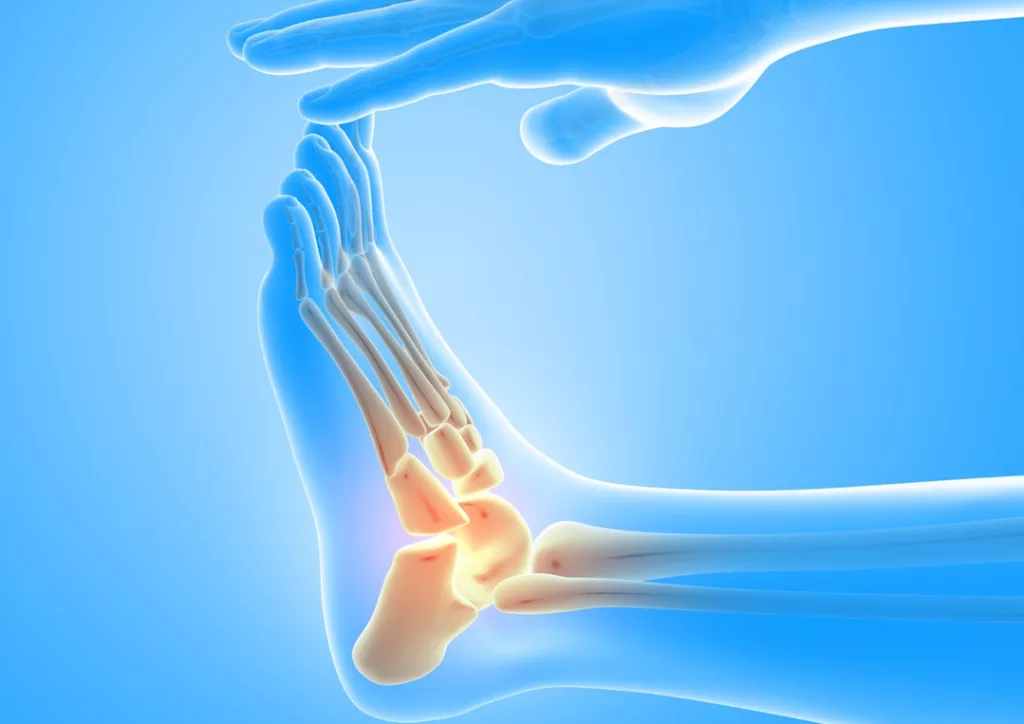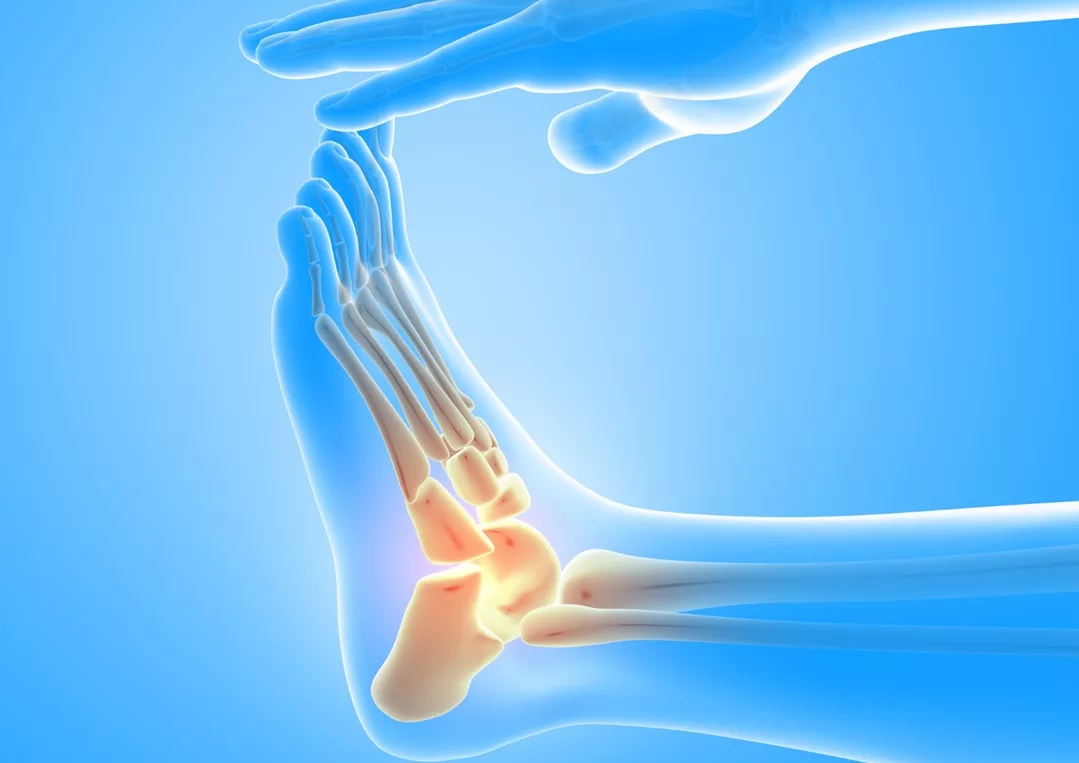What Is the Lisfranc Joint?
The Lisfranc joint serves as the meeting point for the metatarsal bones, which extend to the toes, and the tarsal bones located in the foot’s arch. It’s fortified by the Lisfranc ligament, a robust tissue connecting these bones to ensure the joint’s proper alignment and strength.
Causes of Lisfranc Injuries
Lisfranc joint injuries are frequent among individuals involved in vehicle accidents, military service members, athletes such as runners and football players, horseback riders, or even in everyday scenarios like missing a step. These injuries can arise from direct forces like a heavy object falling on the foot, or indirect forces involving the foot’s twisting motion.
Classifications of Lisfranc Injuries
Lisfranc injuries present in three main forms, which can simultaneously occur:
- Sprains: Weakening of the strong ligaments beneath the midfoot can result in joint instability.
- Fractures: Fractures in the Lisfranc joint range from avulsion fractures, where a small bone fragment is pulled away, to more severe breaks across the midfoot bones.
- Dislocations: The joint’s bones may be dislodged from their natural positions.
Recognizing Symptoms
A suspected Lisfranc injury may be identified by symptoms such as:
- Foot swelling
- Pain in the midfoot when standing or under pressure
- Difficulty or inability to bear weight, especially with severe injuries
- Bruising or blistering on the foot’s arch is notably indicative of a Lisfranc injury; bruising might also appear on the foot’s top surface.
- An apparent broadening of the affected foot.
Diagnostic Approach
Differential diagnosis is crucial, as Lisfranc injuries can be confused with ankle sprains. An accurate diagnosis involves the foot and ankle surgeon’s comprehensive evaluation — including the nature of the incident, a physical examination, X-rays, and possibly more detailed imaging. We might need to conduct an additional assessment under anesthesia to thoroughly investigate the joint and nearby structures.
Nonsurgical Management
Immediate medical attention for a Lisfranc injury is paramount. Until then, refraining from putting weight on the foot, elevating it above hip level, and applying ice regularly can manage swelling and discomfort effectively.
The foot and ankle surgeon’s treatment plan may encompass several strategies according to the injury’s nature and severity:
- Immobilization: Casting may be necessary to immobilize the foot, supplemented by crutches to avoid weight-bearing.
- Oral Medications: NSAIDs like ibuprofen aid in mitigating pain and inflammation.
- Ice and Elevation: Experts recommend using ice application and elevation strategies to alleviate swelling.
- Physical Therapy: Post-initial recovery, physical therapy might help in regaining function.
Surgical Intervention Criteria
Surgical procedures might be required for particular Lisfranc injury cases. The foot and ankle surgeon will prescribe the most fitting surgical method for the patient’s specific condition, with some situations necessitating immediate intervention.
Potential Complications
Following a Lisfranc injury, complications such as compartment syndrome — a condition calling for urgent surgery due to increased tissue pressure — can manifest. Risks also include the development of arthritis and foot alignment issues. Typically occurring months after the injury and possibly necessitating further treatment.





